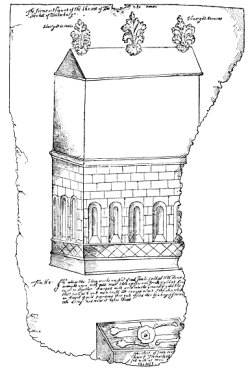Canterbury Cathedral
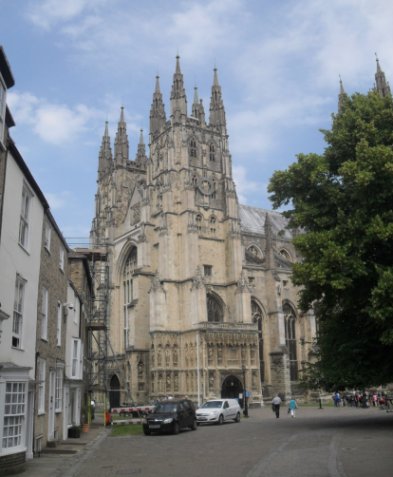
Below is the present view of the location of the martydom. Here, in one of the most sacred places in the cathedral, was placed the medieval shrine known as the altar of the sword's point, containing the point of the sword of Le Breton, broken off during the attack.

'The wicked knight leapt suddenly upon him, cutting off the top of the crown which the unction of sacred chrism had dedicated to God. Next he received a second blow on the head, but still he stood firm and immovable. At the third blow he fell on his knees and elbows, offering himself a living sacrifice, and saying in a low voice, "For the name of Jesus and the protection of the Church, I am ready to embrace death." But the third knight inflicted a terrible wound as he lay prostrate. By this stroke, the crown of his head was separated from the head in such a way that the blood white with the brain, and the brain no less red from the blood, dyed the floor of the cathedral. The same clerk who had entered with the knights placed his foot on the neck of the holy priest and precious martyr, and, horrible to relate, scattered the brains and blood about the pavements, crying to the others, 'Let us away, knights; this fellow will arise no more.'
Becket was first buried in the cathedral crypt; the location is shown below. The first relatively simple shrine is shown here in a drawing based on a window that we will see later. The spaces allowed pilgrims to put head and shoulders into the shrine: the box on the top contained remains of blood and bones.
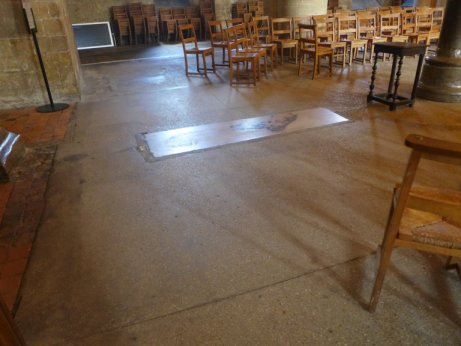
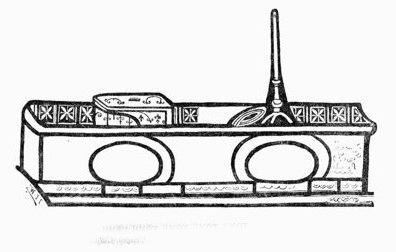
The photograph below is of the shrine of Saint Wite, in the church of St Candida and the Holy Cross in Whitchurch Canonicorum in Dorset. It is the only church shrine remaining in England post reformation and gives an idea of the appearance of medieval shrines. Interestingly, on our visit we noticed that many written appeals to the saint had been left inside the shrine.
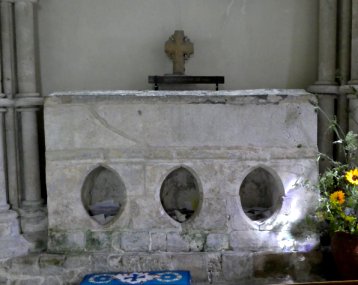
Following a fire in 1174 plans were put in place for a far more magnificent shrine in the newly built chapel of the Blessed Trinity, immediately above the original tomb. His relics were moved here in 1220. The location is shown below, and what is left of a drawing of it from a medieval manuscript now in the British Library. A visiting archbishop from the Baltic region said that he believed 'there was not in the whole world another shrine for value of beauty like that of St. Thomas of Canterbury.' Here is a description by a Venetian visitor:
'The tomb of St. Thomas the Martyr, Archbishop of Canterbury, exceeds all belief. Notwithstanding its great size it is all covered with plates of pure gold; yet the gold is scarcely seen because it is covered with various precious stones, as sapphires, ballasses, diamonds, rubies, and emeralds; and wherever the eye turns, something more beautiful than the rest is observed. Nor, in addition to these natural beauties, is the skill of art wanting; for in the midst of the gold are the most beautiful sculptured gems, both small and large, as well as cameos; and some cameos are of such a size that I am afraid to name it; but everything is far surpassed by a ruby, not larger than a thumb nail, which is fixed at the right of the altar. The church is somewhat dark, and particularly in the spot where the shrine is placed; and when we went to see it the sun was near setting, and the weather was cloudy: nevertheless, I saw that ruby as if I had it in my hand. They say it was given by a king of France.'

